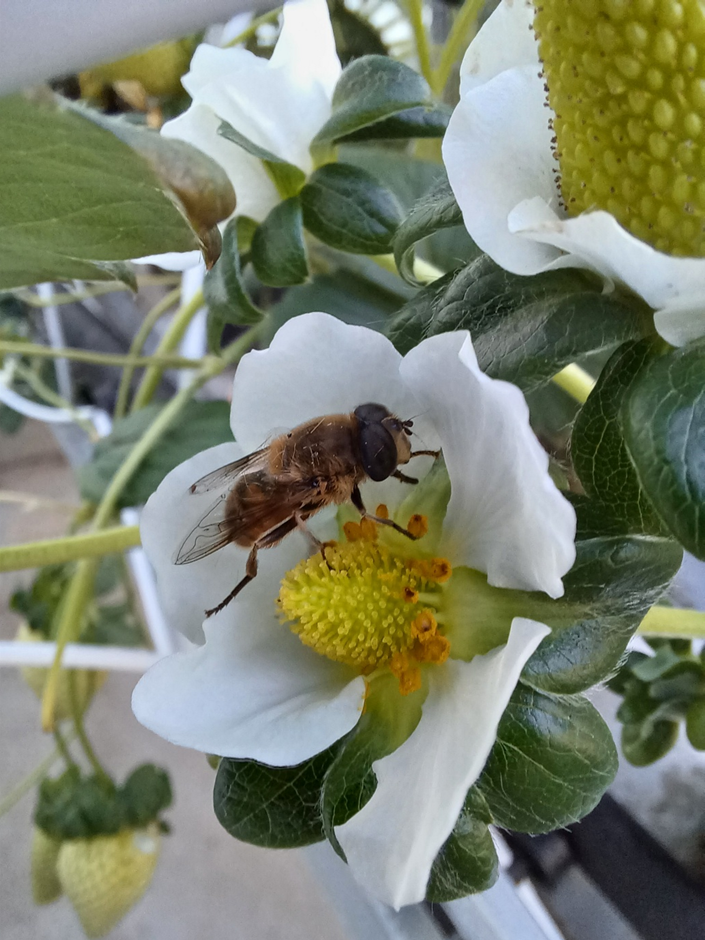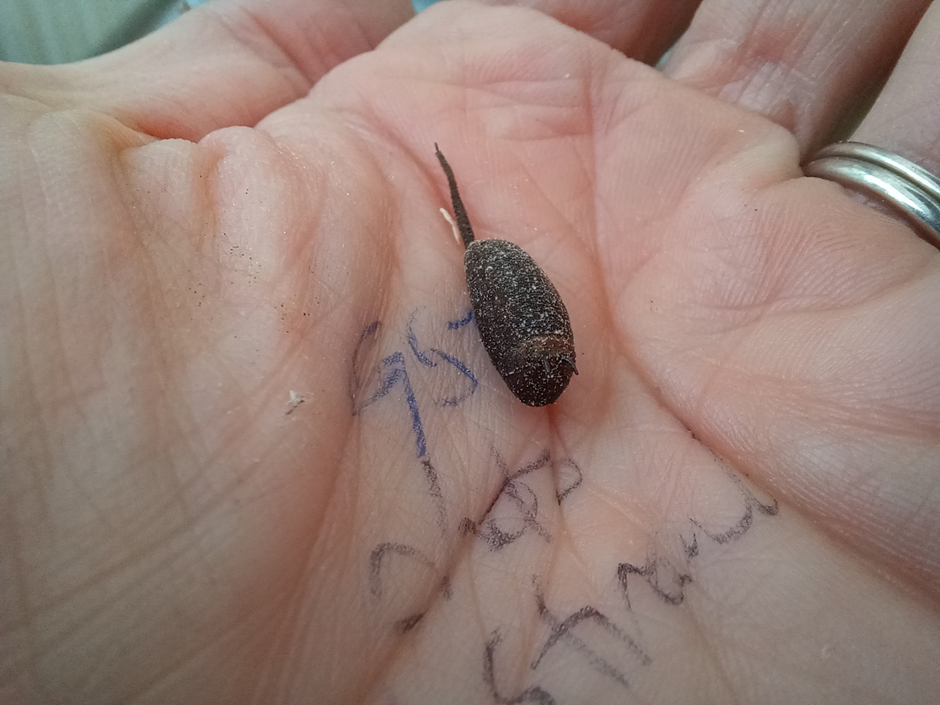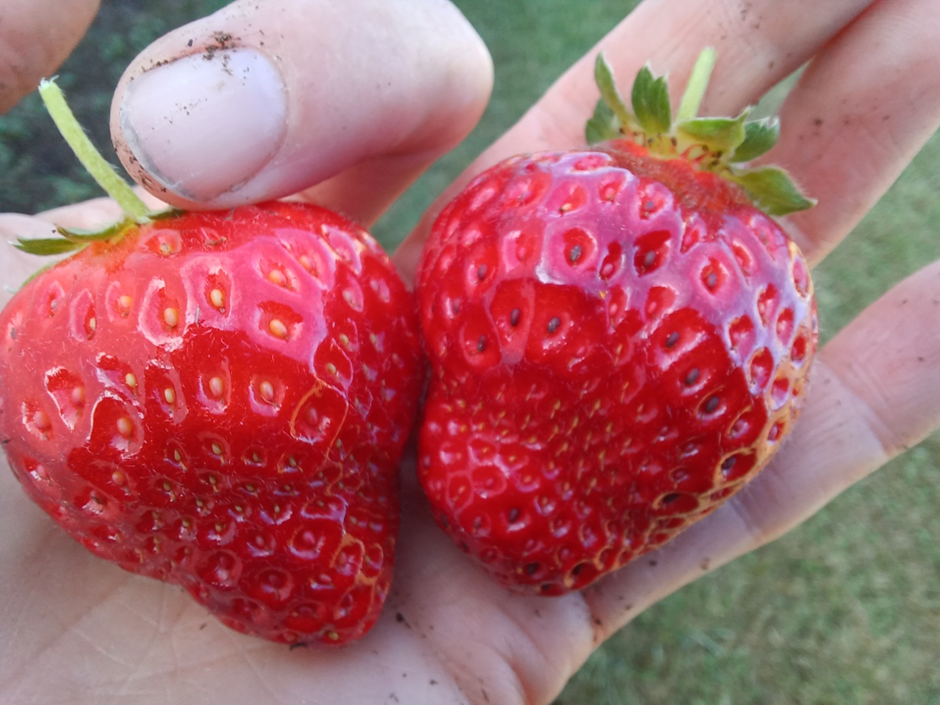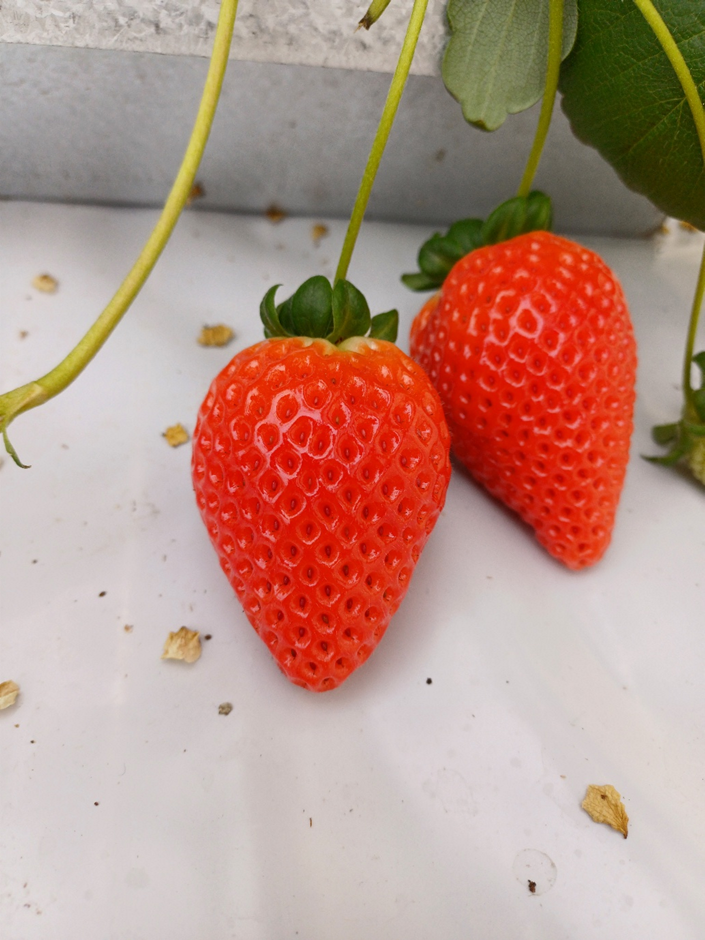© 2025 Berryworld, All Rights Reserved
We grow strawberries through the winter. It gives us a little look at the performance of varieties out of the normal season (Fortuna is particularly strong), and we get to have strawberries on our breakfasts. Plus, the Foundation Stock Unit is empty during winter and we’re paying rent, so we might as well use the space.
The past two years we’ve struggled with pollination. The unit has heat and is vented, but there’s no wind and the screens keep out all pollinators. See https://www.berryworld.co.nz/blog-posts/knobbly-berries
We tried a box of bumblebees last year, but the results were disappointing. With only a few dozen plants, the bumbles didn’t really have enough to sustain them and their hive didn’t last long.
Drone flies are showing potential as a new pollination option for strawberries following some early trials done at Plant and Food Research (now part of the newly formed Bioeconomy Sciences Institute) led by Melissa Broussard as part of the SSIF-funded Overcoming Pollination Barriers programme. Earlier work at PFR developed a method of rearing drone flies for on-farm pollination of carrot see crops in Canterbury, and that work is being built upon to serve other cropping systems.
This year, in collaboration with PFR, we put in a few drone flies in the greenhouse in late May to test them in winter conditions where neither honey bees nor bumble bees do well.
Drone flies look like male honeybees, and as adults they feed in flowers. As larvae (maggots) they feed in anaerobic puddles of stagnant organic matter….and apparently they prefer rabbit and horse poo to cow poo or sheep poo. Stinky, but cheap!



Plant and Food Research (now part of the newly formed Bioeconomy Sciences Institute) has worked on a system to raise them on farm forpollinating carrot seed crops in Canterbury. A member of the team, Melissa Broussard, pollination scientist in Hamilton, has been working with drone flies for pollinating strawberries in totally indoor production systems.
Earlier in the winter our strawberry fruit was knobbly, with lots of seconds, but 5-6 weeks after fly introduction we noticed a marked improvement in the quality of the harvested fruit. It takes 5-6 weeks for a flower to become a fruit at this time of year, so the well-formed fruit correlated with introduction of the flies.
Plant and Food Research (now part of the newly formed Bioeconomy Sciences Institute) has worked on a system to raise them on farm for pollinating carrot seed crops in Canterbury. A member of the team, Melissa Broussard, pollination scientist in Hamilton, has been working with drone flies for pollinating strawberries in totally indoor production systems.
Earlier in the winter our strawberry fruit was knobbly, with lots of seconds, but 5-6 weeks after fly introduction we noticed a marked improvement in the quality of the harvested fruit. It takes 5-6 weeks for a flower to become a fruit at this time of year, so the well-formed fruit correlated with introduction of the flies.


The PFR team has been supplying drone flies for our little 45m2 unit. We have a basin of stagnant water and organic matter in the greenhouse now, with the intention of raising our own maggots. So far we’ve only had one hatchling (not sure what nuance we’re not getting quite right there). Melissa’s trials in the Waikato found that full pollination could be possible with just a couple flies per 200 plants, and we’re seeing great results with 1 fly per 70 plants here. Check out the beautiful fruit!